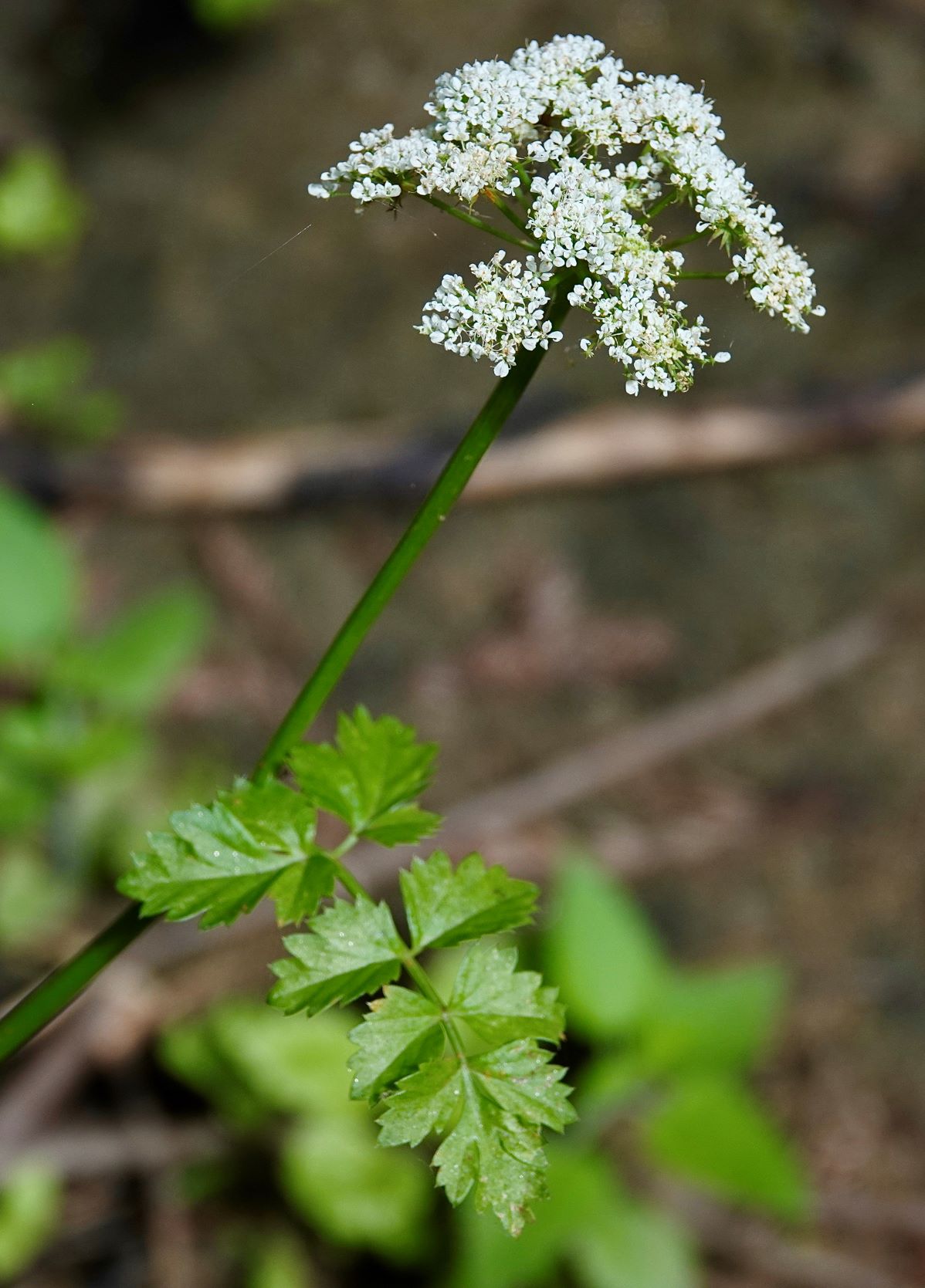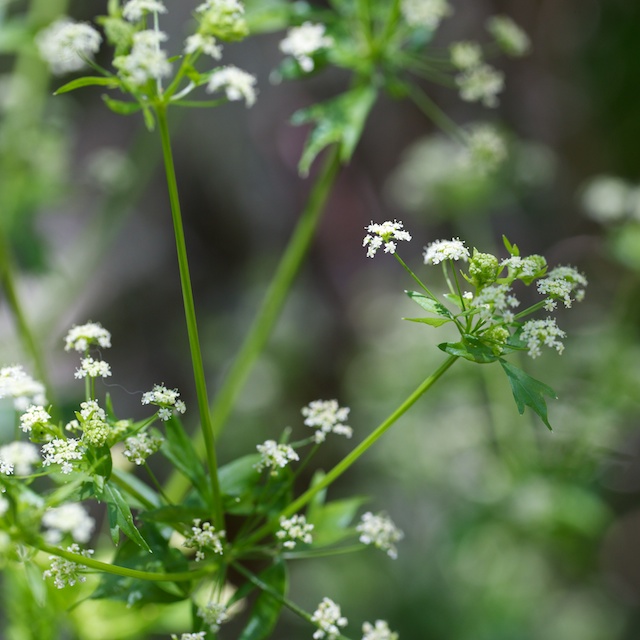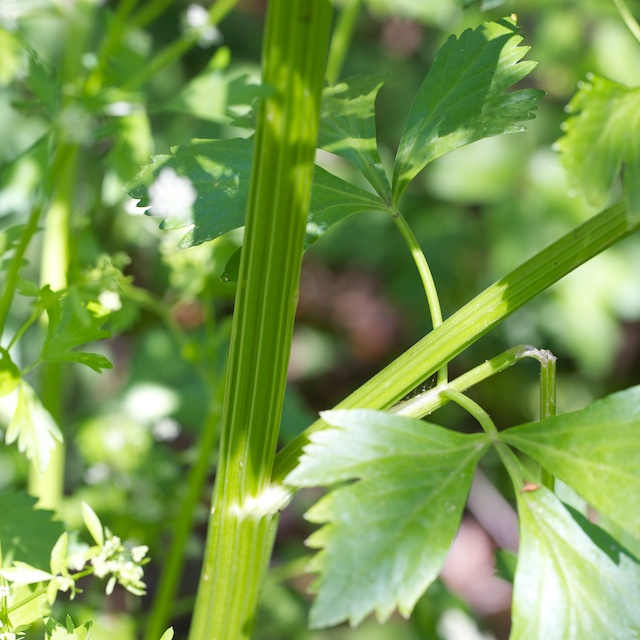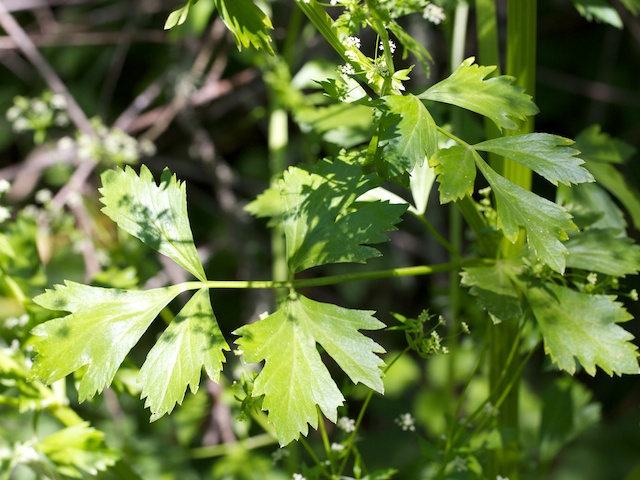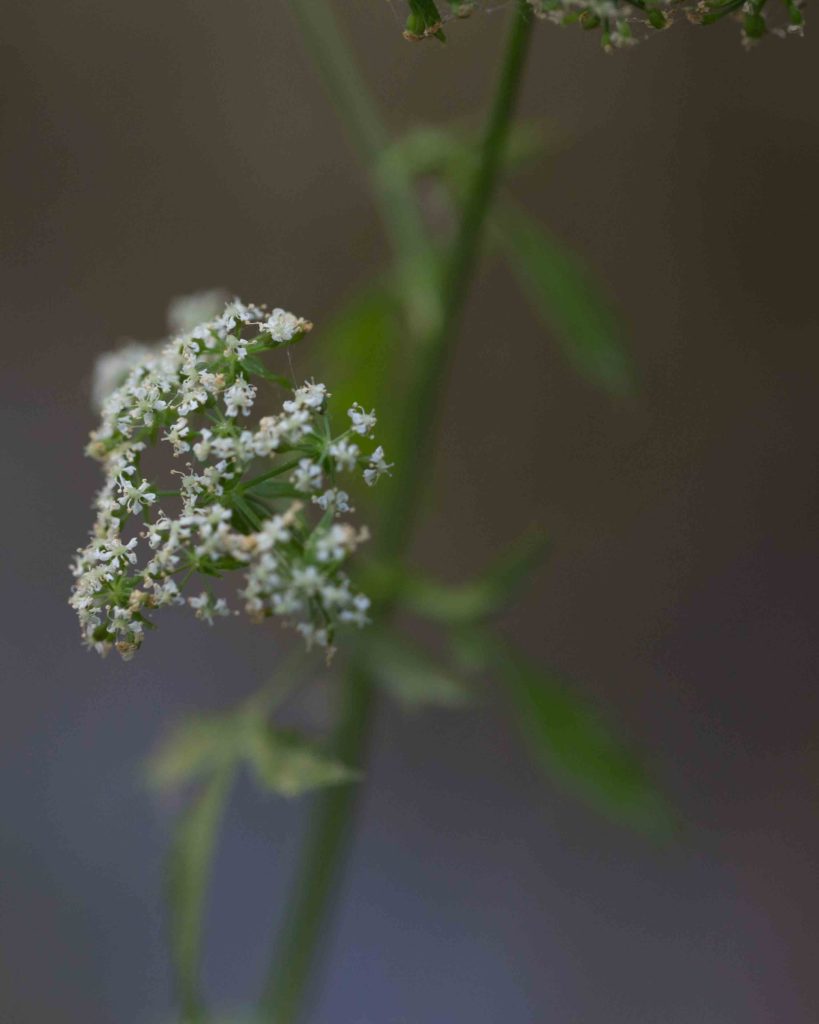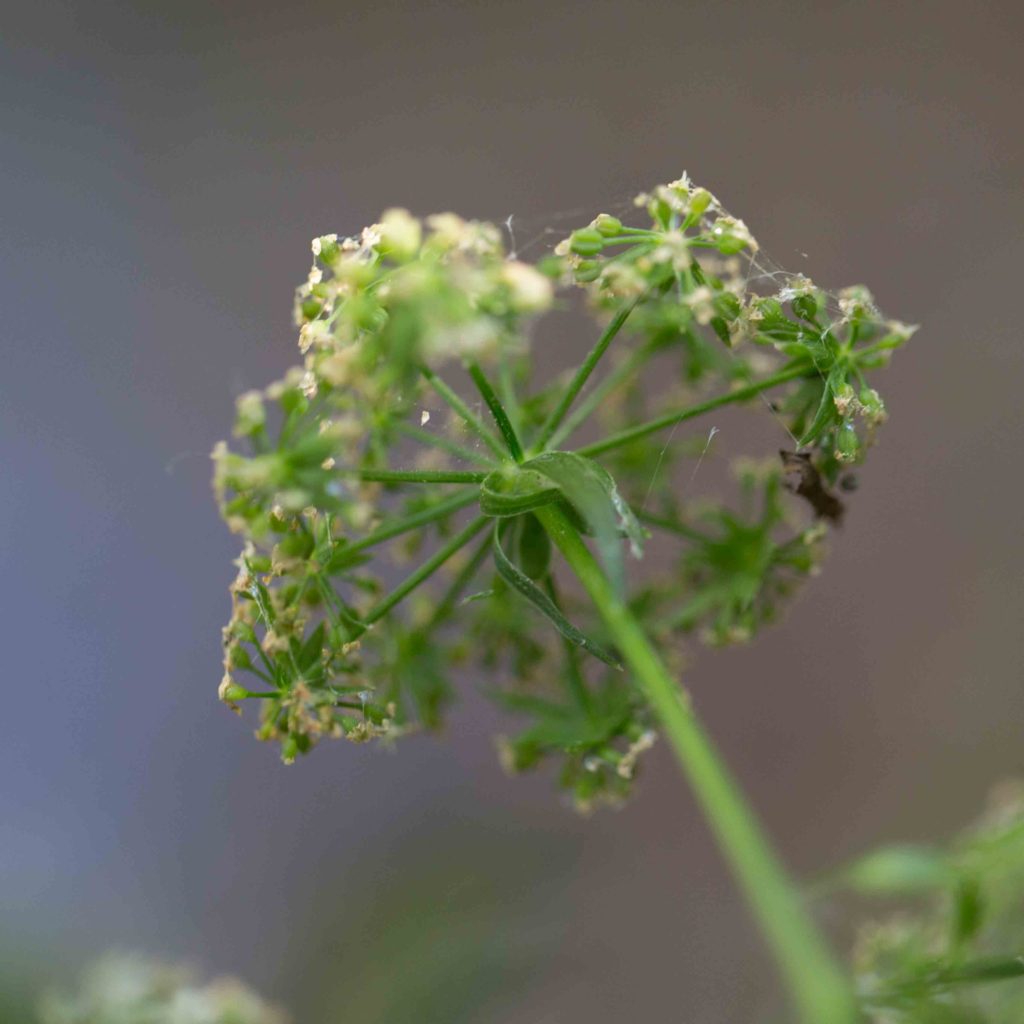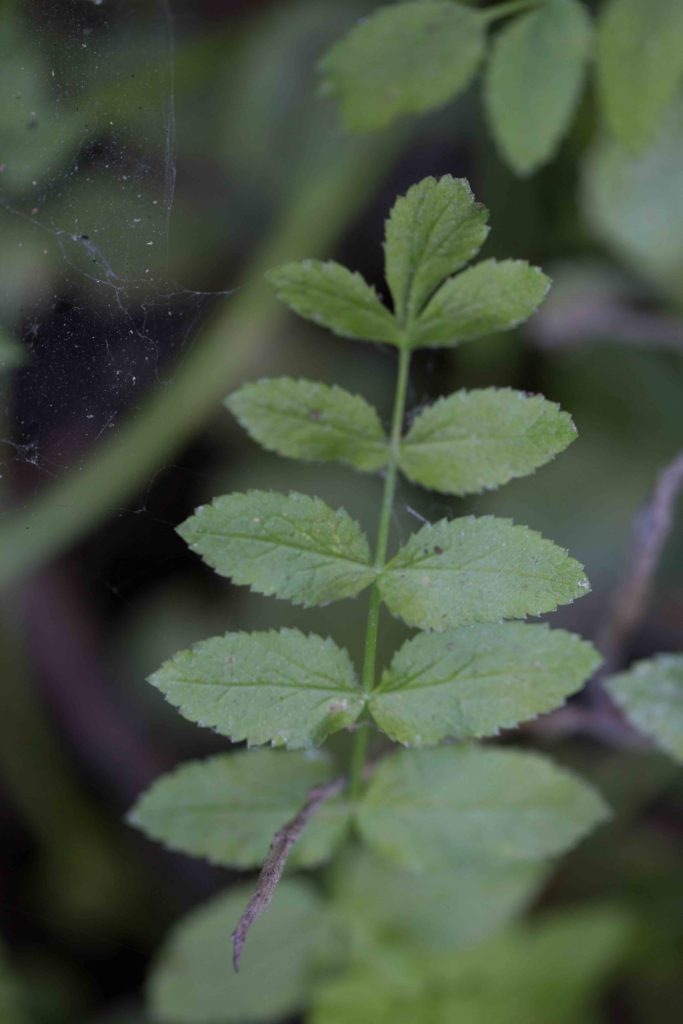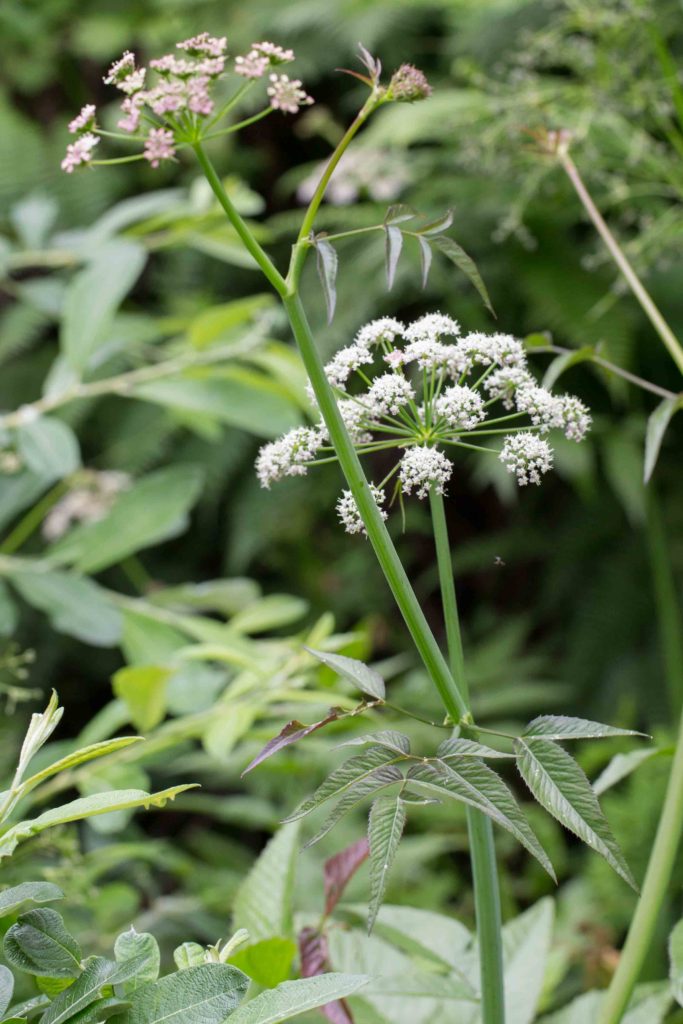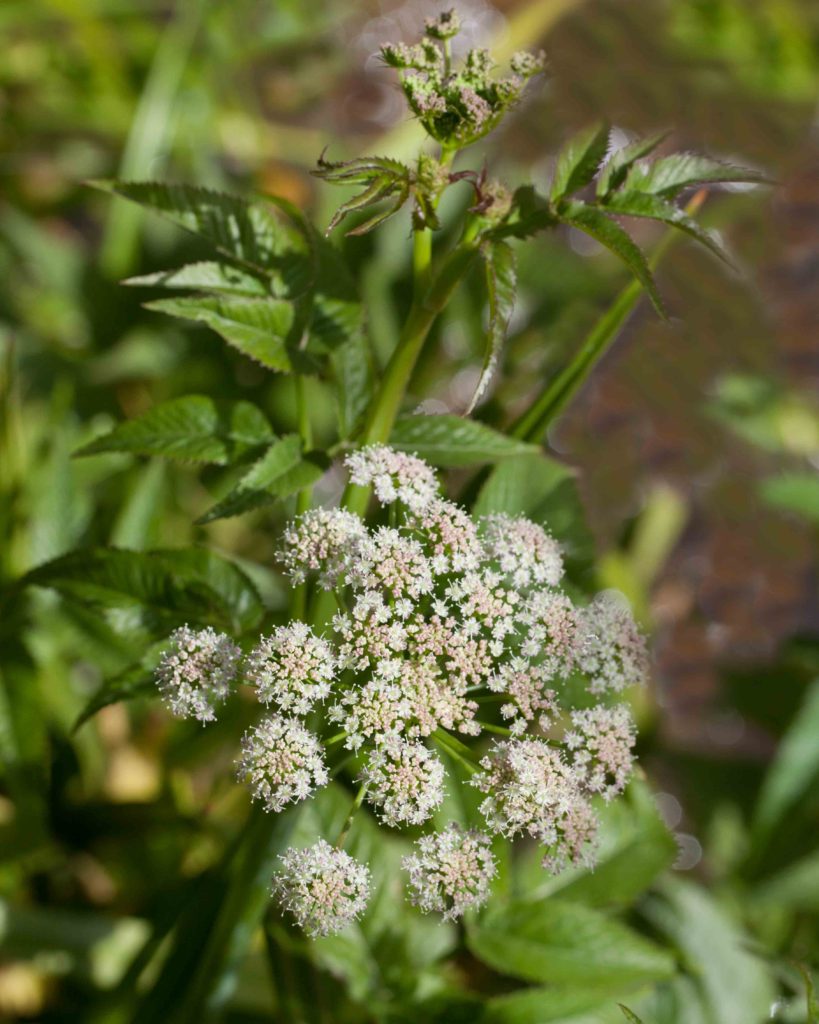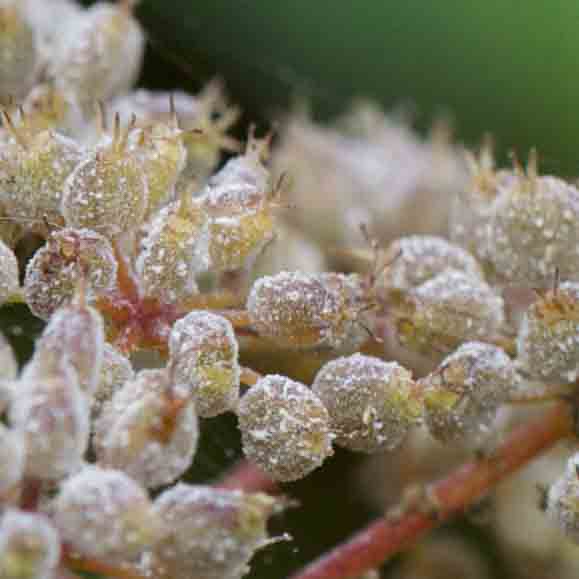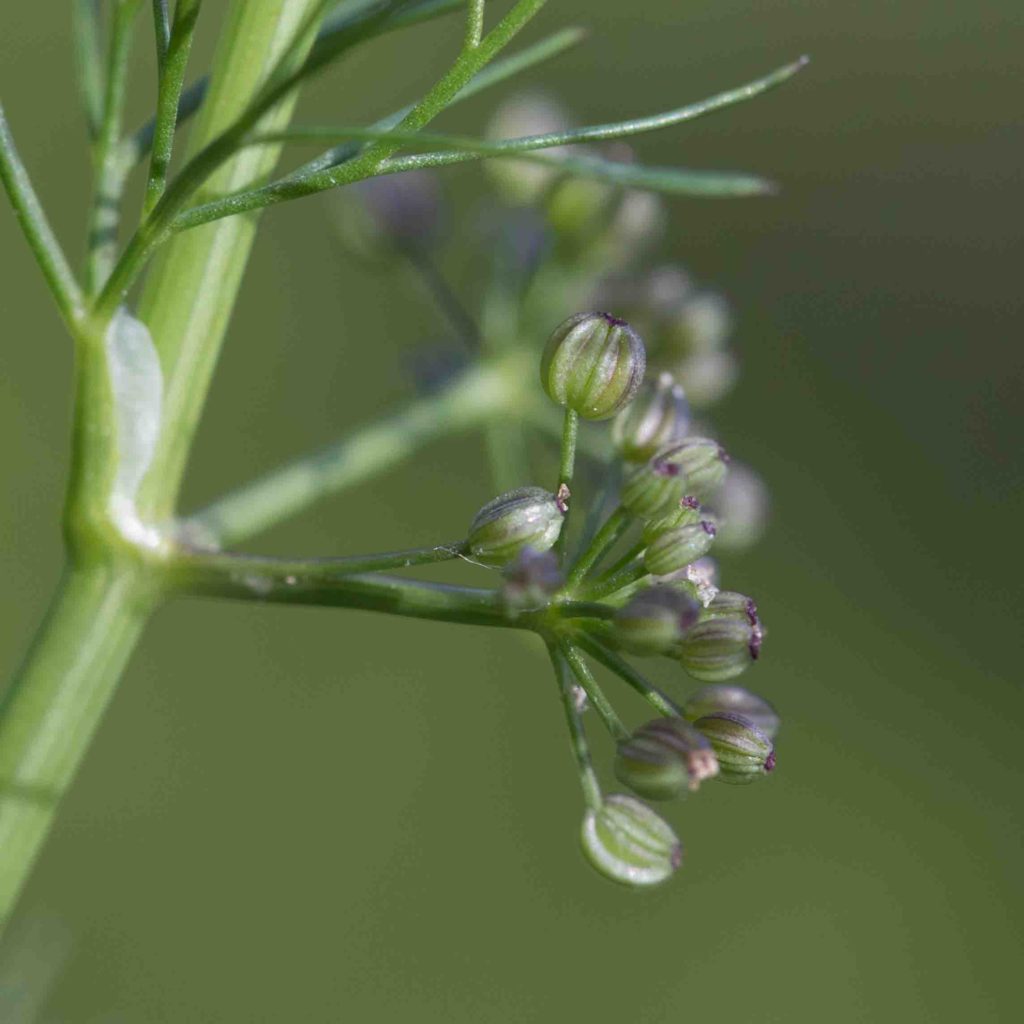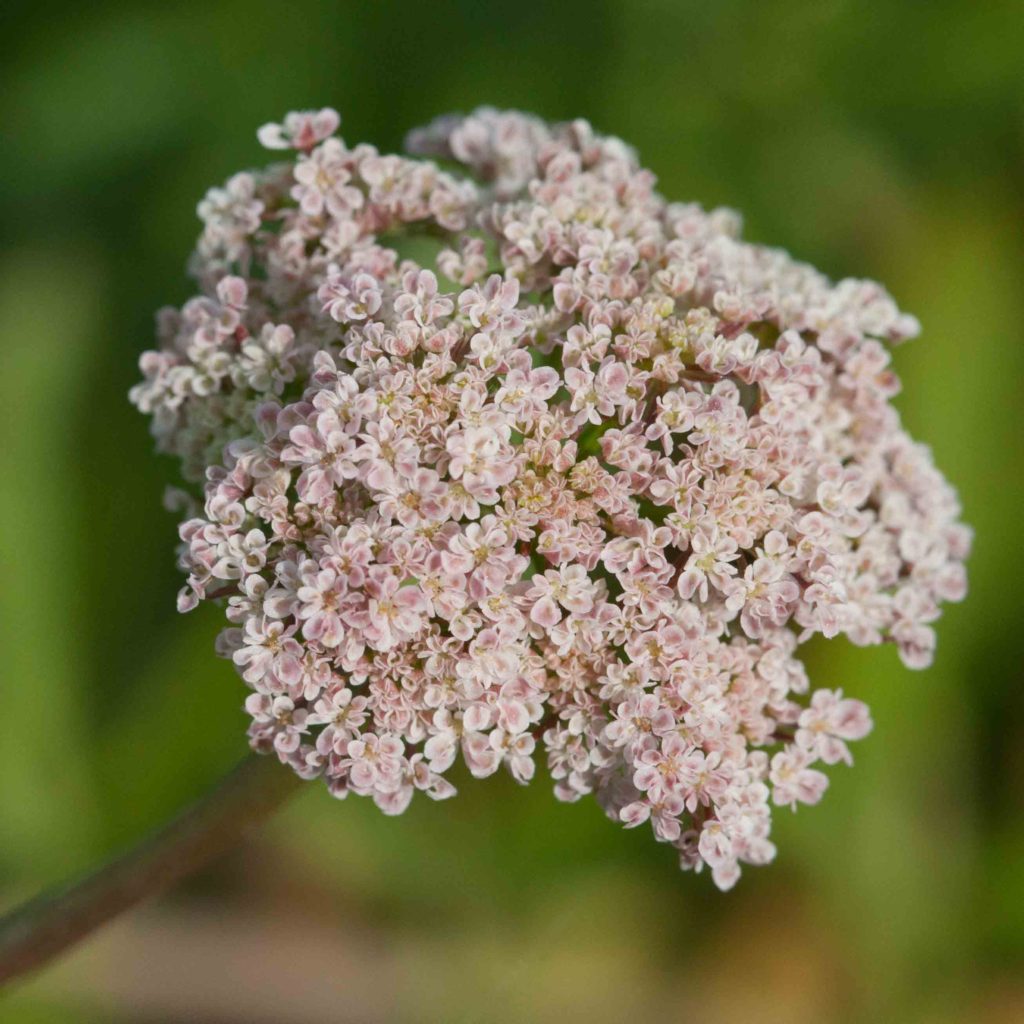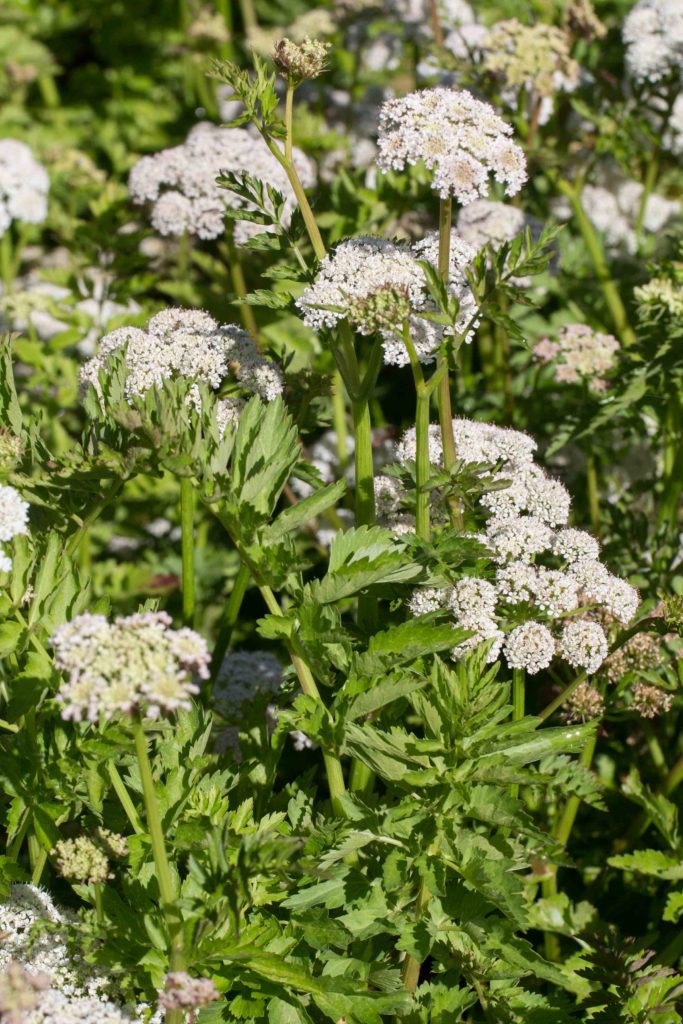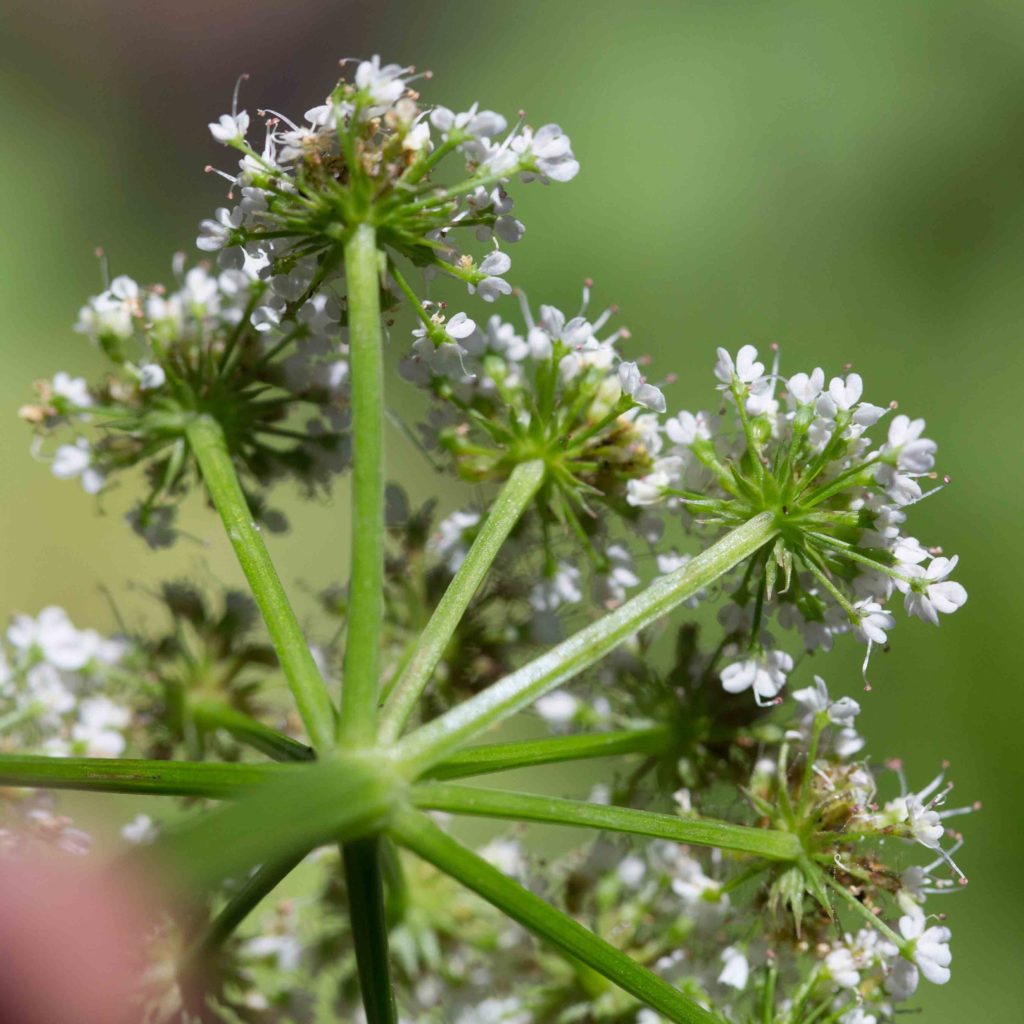Apiaceae: Carrot Family – In or near water
Most members of the Apiaceae (carrot) family are characterized by having their flowers arranged in umbels, i.e. with segments radiating from a single point. Formerly, the family was called Umbelliferae. Many have compound umbels, where an umbel contains multiple inflorescences, each of which is an umbel. Umbels may be rounded, flat-topped or concentrated in head-like structures. Most members of the family have white flowers. Notable exceptions are Fennel, Lomatiums, most Sancicles and Tauschia, which have yellow flowers. This page shows plants found in or near water.
Celery / Smallage – Apium graveolens
Blooms:
May–July
Plant Height:
0.5–1.5 m
Flower Size:
Large cluster
Origin:
Eurasia
Habitat:
Wet places below 1000 m
Notes:
Widely cultivated, this is a relative of store-bought celery. The smell of the leaves is unmistakably celery-like, and the stem has the same furrowed appearance. The stem is not eaten, but the leaves can be and are said to have a coarse, earthy taste. Leaves are 2–4.5 cm long and sharply toothed. Photo #1 by CJH.
Cut-leaved Water Parsnip – Berula erecta
Blooms:
July–Oct
Plant Height:
20–80 cm
Flower Size:
Large cluster
Origin:
Native
Habitat:
Streams and other wet or marshy places
Notes:
This is a stout, aquatic plant. The white flowers are in umbels, with leaf-like bracts and bractlets. Leaves are pinnate, with 7–12 pairs of oblong to ovate leaflets.
Western Water Hemlock – Cicuta douglasii
Blooms:
June–Sept
Plant Height:
1.5–3 m
Flower Size:
Medium cluster
Origin:
Native
Habitat:
Near ponds, streams & seeps
Notes:
Flowers are in a loose, flat umbel. Leaves are pinnate, leaflets 1–10 cm long, lanceolate in shape with entire or serrated edges. Fruits are roundish, compressed from side to side. It is poisonous — said to be the most lethally toxic of all California native plants, even more than Poison Hemlock (Conium maculatum).
Marsh Parsley – Cyclospermum leptophyllum
Blooms:
Apr–Aug
Plant Height:
10–60 cm
Flower Size:
Small clusters
Origin:
Eurasia
Habitat:
Moist places
Notes:
This is a weedy plant, and its leaves are finely dissected, with linear to thread-like segments. Individual flowers are very small, with 5 pinkish-white petals. Inflorescences have no subtending bracts. Fruits are elliptic to ovate, and somewhat flattened.
Pacific Oenanthe – Oenanthe sarmentosa
Blooms:
June–Oct
Plant Height:
5–15 dm
Flower Size:
Medium cluster
Origin:
Native
Habitat:
Ponds & marshes
Notes:
This has a dense umbel of white or red-tinged flowers. Bracts are generally absent, but there are many bractlets. Leaves are 2-pinnate, 1–6 cm leaflets with serrated to lobed edges. Fruits are reddish, oblong with prominent ribs. Can grow profusely in ponds or marshy areas.
